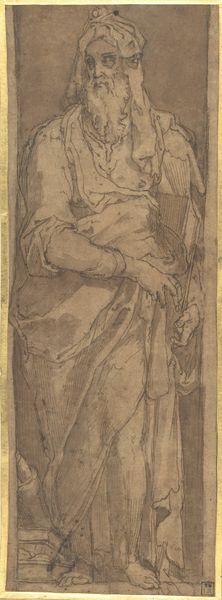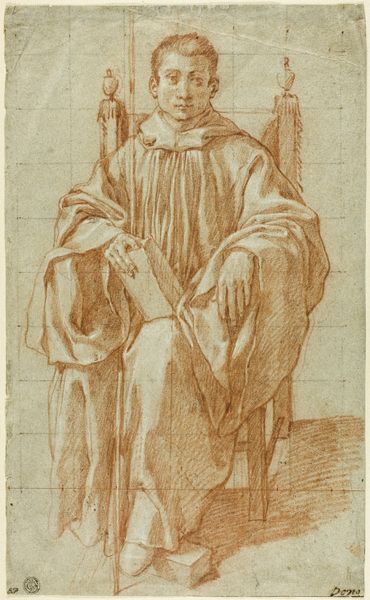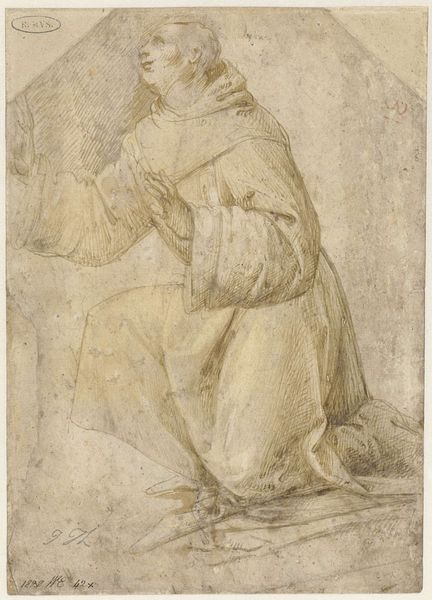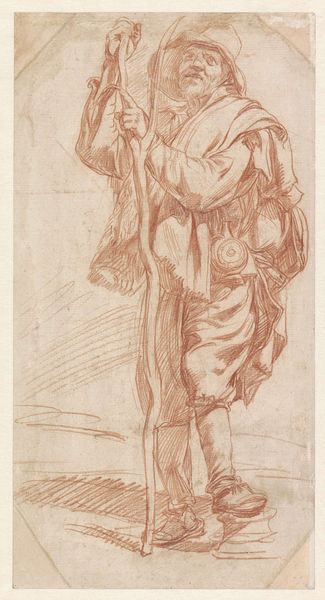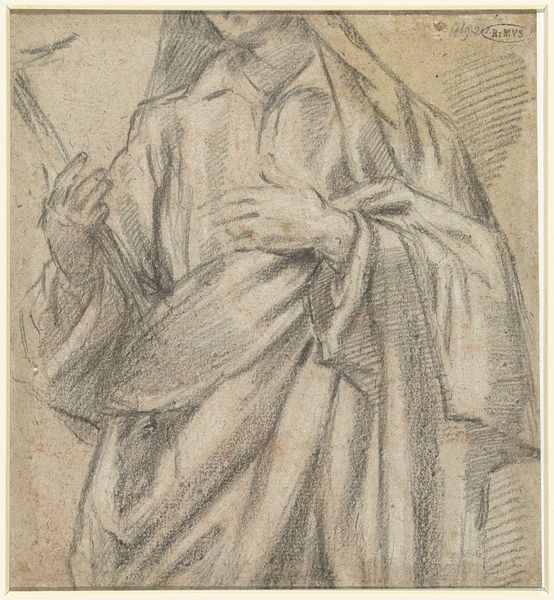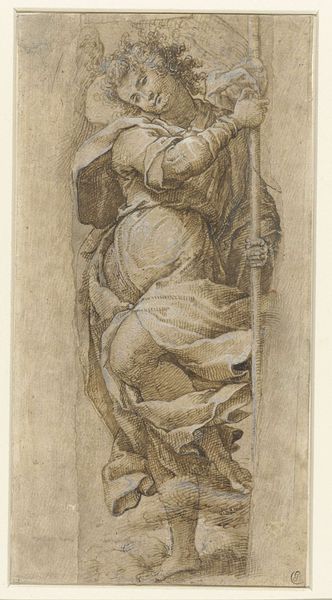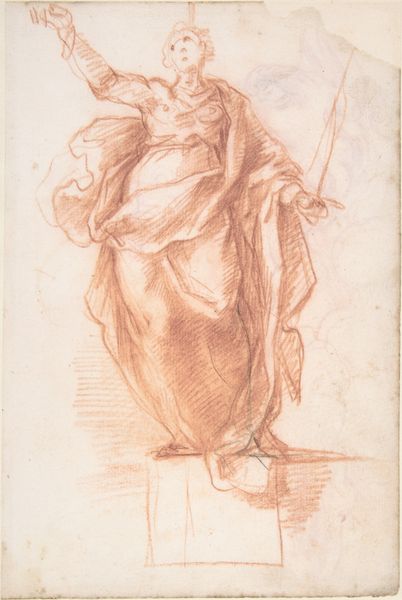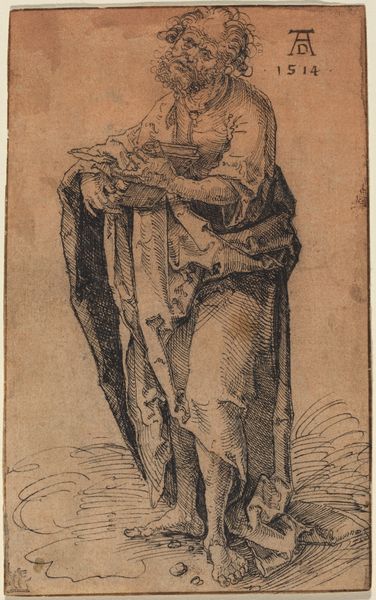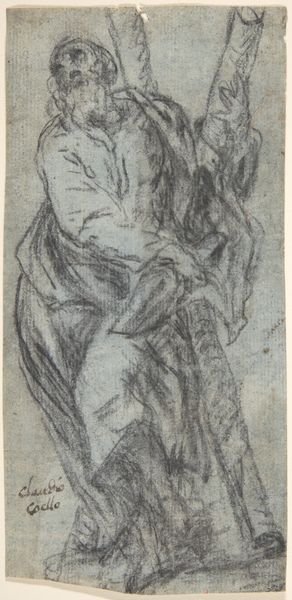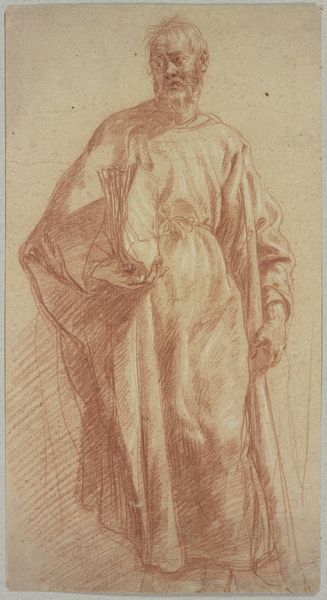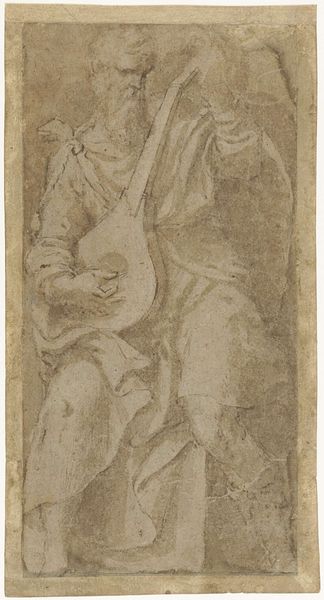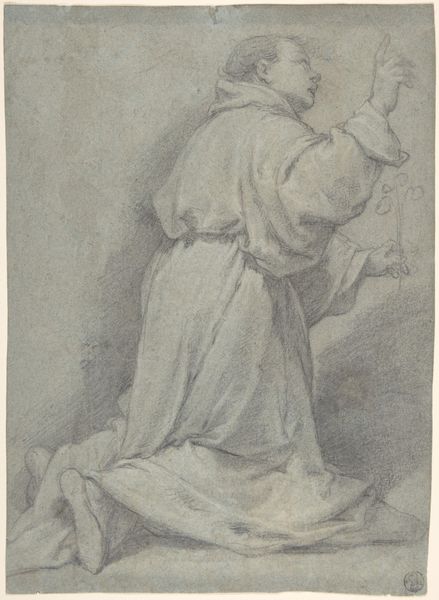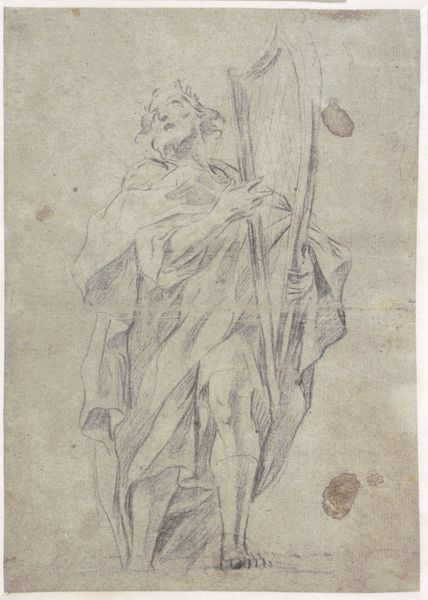
drawing, dry-media, chalk
#
portrait
#
drawing
#
mannerism
#
figuration
#
dry-media
#
chalk
#
academic-art
Dimensions: 14 15/16 x 9 3/4 in. (38 x 24.7 cm) (sheet)
Copyright: Public Domain
Editor: This is Ferrarù Fenzoni's "Study of a Seated Youth," made around the early 1590s. It's a red chalk drawing. I’m struck by the pose; the youth seems to be in a state of contemplation, almost melancholic. How does this work fit into the artistic landscape of its time? Curator: That’s a perceptive observation. This drawing offers insights into the artistic practices and social functions of art academies of the late 16th century. We see a blend of academic study, focusing on anatomical precision and classical ideals, combined with Mannerist tendencies in the elongated figure and dynamic pose. Ask yourself, what role did these "academy" studies play in solidifying an artist’s standing, and what was its function in conveying a specific idea of “good” art to its viewers? Editor: So, it was both a training exercise and a display of skill, shaping the public’s understanding of art? Curator: Precisely. These studies helped to standardize artistic education and to elevate the status of the artist as a learned professional. This one in particular, through its material presentation, could shape the opinion and reception of art by certain individuals and circles. Now, how might this piece engage in visual politics? Editor: Hmm, visual politics… perhaps the artist sought to elevate the status of drawing within the fine arts, proving it more than just preparatory work? Curator: Exactly! And how the depiction of a “youth,” probably male, affects this claim to elevate not only drawing, but the status of its creator and the artistic process to its viewers. How else can we situate this "study" to impact the viewing public and engage with questions of visual politics? Editor: This makes me reconsider the artist's choices. The focus on idealized human form and refined technique elevates not just drawing but a particular vision of beauty, accessible perhaps only to a specific, educated audience? Curator: An incisive point. The artist, through their skills and knowledge, dictated what society perceived to be the values and ideas about what art is, in turn solidifying and/or contesting those power structures. Thank you for your insight. Editor: And thank you, I have definitely expanded my ideas about its function.
Comments
minneapolisinstituteofart about 2 years ago
⋮
Given that apprentices would enter a master's workshop around the age of 9 or 10, Ferraù Fenzoni likely borrowed one of his young assistants for this sheet. Here the boy poses in mounds of thick drapery while seated on a chair. The figure points directly at the artist - - a difficult pose sustained with the aid of a staff to support the boy's hand. Fenzoni represented this daringly foreshortened gesture with extraordinary skill. Like a number of Fenzoni's life studies, the condition of this drawing is quite worn, indicating that it was displayed regularly and handled roughly. Perhaps the sheet was hung in the artist's studio as an exemplary life drawing, a model for young apprentices to study.
Join the conversation
Join millions of artists and users on Artera today and experience the ultimate creative platform.
